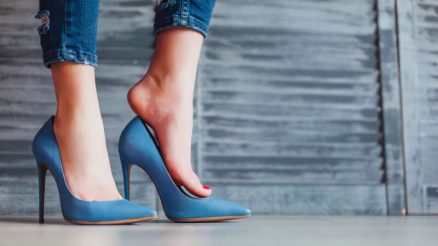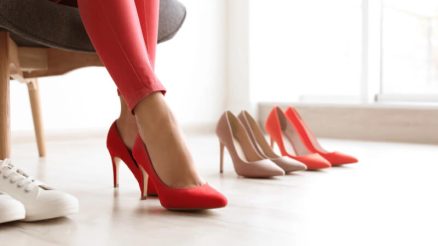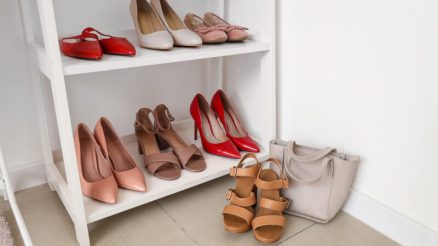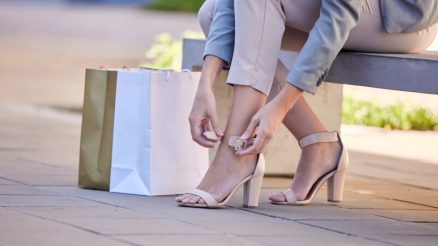For many, high heels are an essential part of their wardrobe, offering a boost in confidence, elegance, and style. But what happens when the desire to wear those chic stilettos clashes with the reality of painful bunions? It’s a common dilemma, and one that often leaves individuals wondering if they have to sacrifice fashion for comfort.
In this detailed guide, we’ll explore the relationship between bunions and high heels, offering insights, tips, and alternatives to help you navigate this tricky terrain.
Understanding Bunions: More Than Just a Bump
Before we delve into footwear, let’s clarify what a bunion actually is. A bunion, or hallux valgus, is a bony bump that forms on the joint at the base of your big toe. It develops when your big toe pushes against the next toe, forcing the joint of your big toe to stick out. This misalignment can cause significant pain, inflammation, and discomfort, especially when pressure is applied to the area.
While genetics can play a role, ill-fitting footwear is a major contributing factor to the development and worsening of bunions.
The Problem with Heels: Why They Exacerbate Bunion Pain
High heels, by their very design, create a challenging environment for feet, particularly those with bunions. Here’s why:
- Increased Pressure on the Forefoot: When you wear heels, your body weight shifts forward, placing immense pressure directly onto the ball of your foot and, consequently, onto the bunion joint. This constant compression can lead to increased pain, swelling, and irritation.
- Altered Foot Mechanics: Heels force your foot into an unnatural angle, shortening the Achilles tendon and tightening calf muscles. This can further exacerbate the misalignment of the big toe joint.
- Narrow Toe Boxes: Many high heels, especially pointed-toe styles, feature a very narrow toe box. This squeezes the toes together, pushing the big toe further into its deviated position and rubbing against the bunion, leading to blisters and increased pain.
- Lack of Support: Often, high heels lack adequate arch support and cushioning, which are crucial for comfortable foot function and distributing pressure evenly.
So, Can You Wear Heels with Bunions? The Nuance
The straightforward answer is: it depends, and with extreme caution. For some, even a low heel can be excruciating. For others, occasional wear of a carefully selected heel might be tolerable.
It’s crucial to understand that regularly wearing high heels, especially those with narrow toe boxes and high elevations, will likely worsen your bunions over time. They can accelerate the progression of the deformity and increase chronic pain.
However, if you’re determined to wear heels for a special occasion, there are strategies you can employ to minimize discomfort and potential damage.
Tips for Wearing Heels with Bunions (If You Must)
If you absolutely must wear heels, keep these considerations in mind:
- Opt for Lower Heels: The lower the heel, the less pressure on your forefoot. Aim for heels no higher than 1-2 inches (2.5-5 cm). Kitten heels, block heels, or wedges with a gentle slope are generally better than stilettos.
- Prioritize a Wide Toe Box: This is perhaps the most critical factor. Choose shoes with a generous, rounded, or square toe box that allows your toes to spread naturally without being squeezed. Avoid pointed toes at all costs.
- Choose Softer Materials: Leather, suede, or other pliable materials will conform to your foot more easily than stiff synthetics. This can reduce rubbing and irritation on the bunion.
- Consider Open-Toed Styles: Sandals or open-toed heels can relieve pressure on the bunion itself, as long as the straps don’t cross directly over the painful area.
- Utilize Orthotics and Padding: Custom orthotics or over-the-counter bunion pads can provide cushioning and support, helping to redistribute pressure and reduce friction.
- Limit Wear Time: Save heels for special occasions and wear them for the shortest duration possible. Avoid wearing them for long periods of standing or walking.
- Listen to Your Body: This is paramount. If you feel pain, take the shoes off immediately. Persistent pain is a sign that you’re causing harm.
Stylish Alternatives to Traditional High Heels
The good news is that you don’t have to sacrifice style for comfort. Many fashionable alternatives can keep your feet happy:
- Stylish Flats: From elegant ballet flats to chic loafers and embellished sandals, flats can be incredibly fashionable and comfortable.
- Block Heels & Wedges (Low): These offer more stability and a larger surface area for weight distribution compared to stilettos. Look for styles with a low rise.
- Kitten Heels: A classic choice, kitten heels offer a subtle lift without the extreme pitch of higher heels.
- Boots with Wide Toe Boxes: Ankle boots or knee-high boots with a roomy toe area can be both stylish and comfortable, especially in cooler weather.
- Athletic-Inspired Fashion Sneakers: High-fashion sneakers have become a staple, offering ultimate comfort and a trendy aesthetic.
When to See a Doctor
If your bunion pain is persistent, severe, or significantly impacting your daily life, it’s crucial to consult a podiatrist or orthopedic surgeon. They can assess the severity of your bunion, recommend conservative treatments (like physical therapy, custom orthotics, or splints), and discuss surgical options if necessary.
Conclusion
While the allure of high heels is undeniable, understanding their impact on bunions is key. While it’s not an absolute “no,” wearing heels with bunions requires extreme care, strategic choices, and a willingness to prioritize foot health. By opting for lower, wider, and softer styles, limiting wear, and listening to your body, you can occasionally enjoy a lift without undue pain. Ultimately, embracing comfortable yet stylish alternatives is often the best long-term solution for happy, healthy feet.








